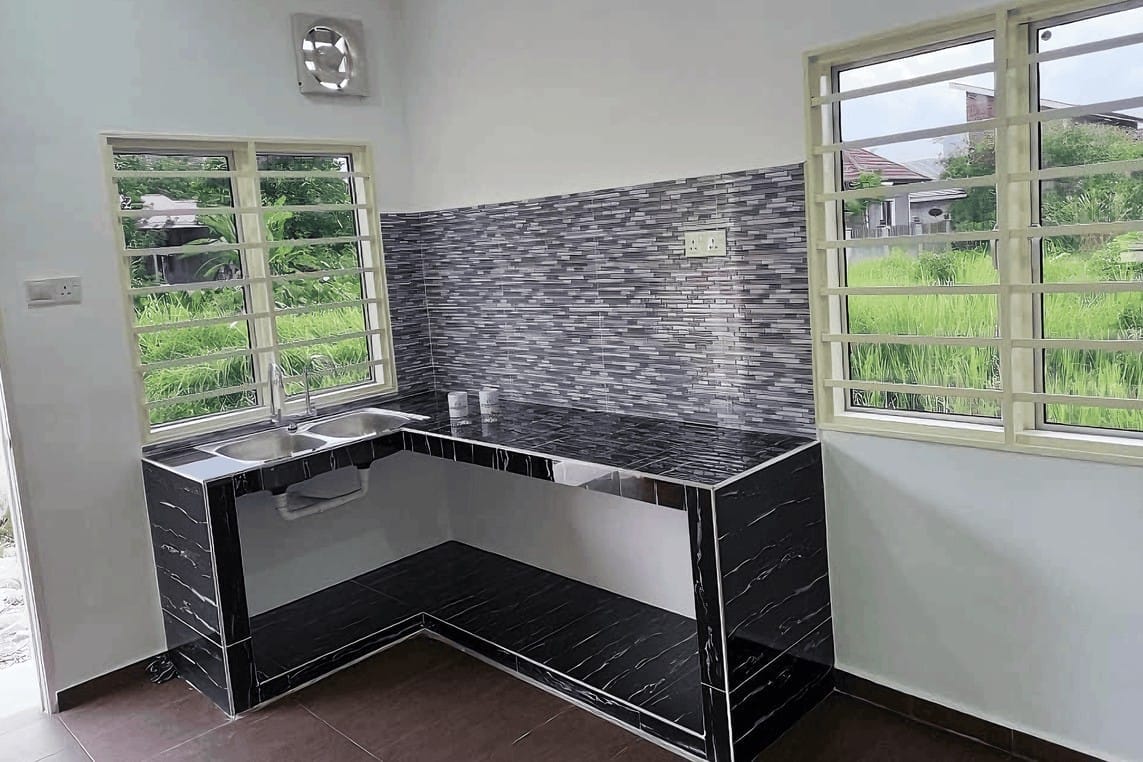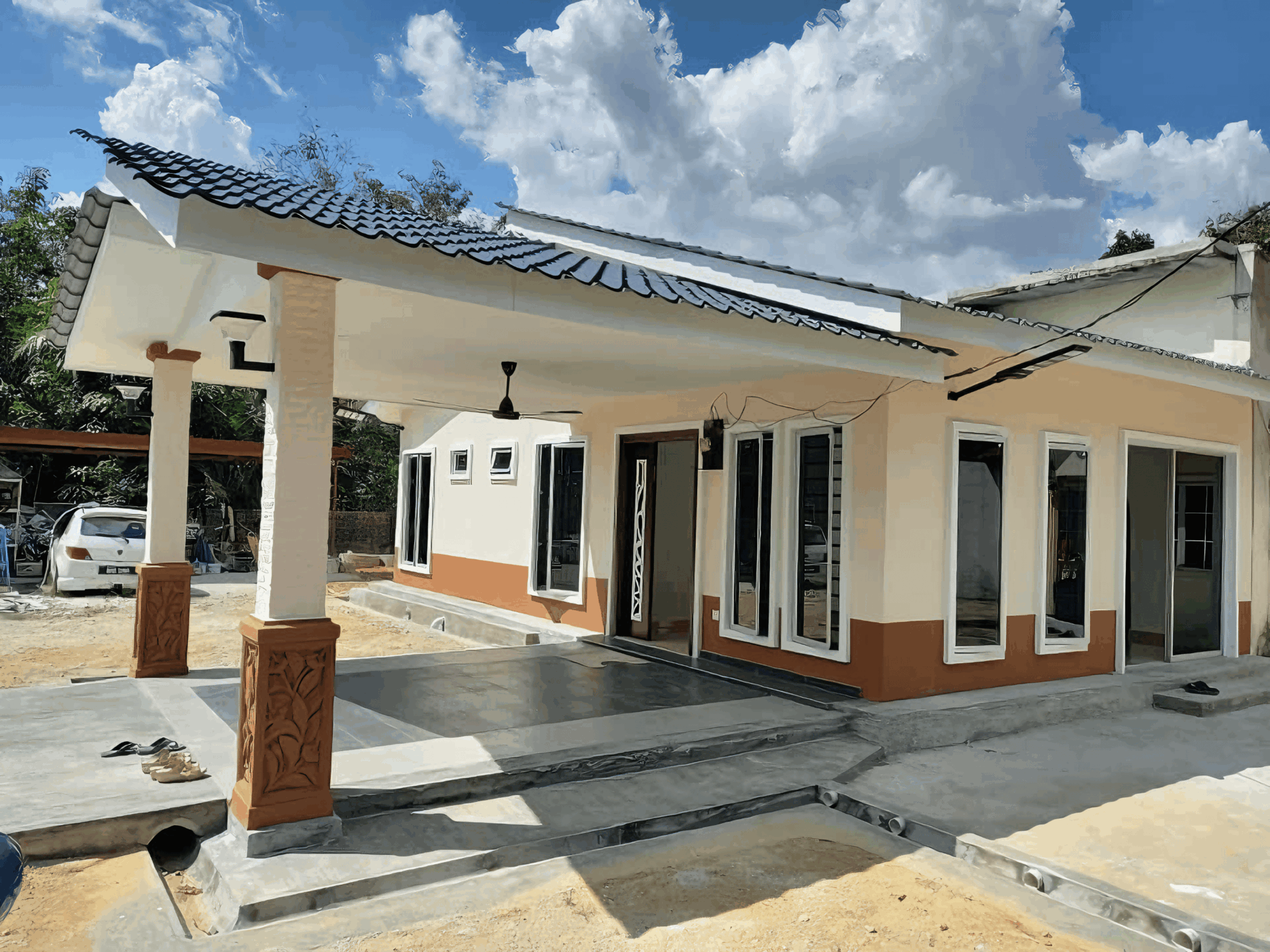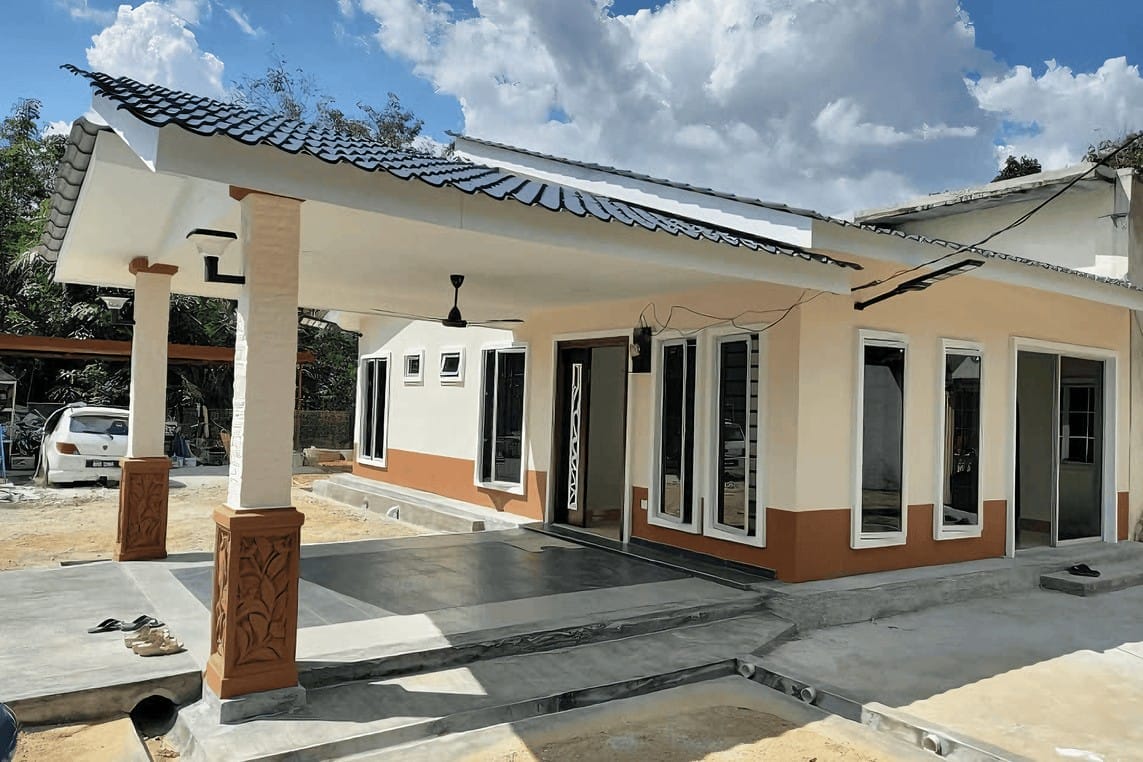Have you ever stumbled upon a hidden gem while rummaging through your old stuff—maybe a forgotten wad of cash tucked away in a pocket? Well, that’s kind of how government incentives feel when you’re diving into a building project. Imagine gearing up for a renovation or starting from scratch, only to discover that the government has set aside some funds specifically to help you along the way. It’s like finding free money that can lighten the financial load and make your dream project a reality. In this article, we’ll unpack the world of government incentives in Malaysia, exploring how they work, why they’re often overlooked, and how you can snag these benefits to give your building ambitions a solid boost. So, grab a cup of kopi, sit back, and let’s dive into the nuts and bolts of unleashing these hidden treasures!
Exploring the Hidden Wealth of Government Incentives for Construction
When diving into a construction project, many of us overlook the treasure trove of government incentives that can significantly lighten the financial burden. These incentives can range from grants and tax breaks to low-interest loans designed specifically for builders. It’s like finding unexpected cash tucked away in a pocket! So why not take the time to explore these opportunities? Here’s what you could uncover:
- Financial Grants: Many local and federal schemes offer financial support for eco-friendly building practices.
- Tax Relief: Certain projects can qualify for tax reductions based on their contribution to community development.
- Subsidized Loans: Borrowing costs can be reduced with government-backed low-interest loans that are available for new constructions.
Moreover, tapping into these resources can aid in creating more sustainable and efficient buildings. Often, there are programs aimed at promoting energy efficiency that not only benefit the environment but also decrease operational costs for your project in the long run. For instance, engaging in green initiatives could unlock additional funds just for adopting sustainable materials or practices, making it a win-win scenario!
| Incentive Type | Benefits | Eligibility Criteria |
|---|---|---|
| Energy Efficiency Grants | Reduce upfront costs, encourage sustainable practices | Must implement energy-saving technologies |
| Rural Development Loans | Lower interest rates, accessible financing | Property needs to be located in a rural area |
| Tax Incentives | Lower tax liabilities, improving cash flow | Must meet specific project requirements |

Understanding the Different Types of Incentives Available
When diving into government incentives, it’s important to explore the various types available for your building project. Different programs cater to unique needs, so knowing what’s out there can make a huge difference. Financial incentives are a great place to start. These can include direct grants or low-interest loans that slash your upfront costs. Imagine receiving funds that you don’t need to pay back, like a gift towards making your dream structure a reality!
Next up, we have tax incentives. These can be a game-changer when it comes to the cost of construction. Certain projects might qualify for tax credits or exemptions based on the nature of your building or its intended use, especially if it’s geared towards sustainability or community development. Just think: reduced tax bills leaving more cash flow for other crucial aspects of your project! Here’s a quick list of some common tax incentives:
- Income tax credits
- Property tax exemptions
- Sales tax rebates
Lastly, consider non-financial incentives which, while not cash in hand, can be incredibly valuable. These may include expedited permitting processes or technical assistance, helping streamline your project from start to finish. By easing bureaucratic red tape, you can save time and ensure your building gets off the ground faster. Below is a simplified table outlining the types of incentives and their benefits:
| Type of Incentive | Benefit |
|---|---|
| Financial Incentives | Grants & low-interest loans |
| Tax Incentives | Reduced tax obligations |
| Non-Financial Incentives | Faster approvals & assistance |

Unlocking Financial Support: Grants, Tax Credits, and Low-Interest Loans
When embarking on a building project, understanding the financial landscape can feel like navigating a maze. But fear not, because there are a multitude of funding opportunities waiting to be explored. Think of grants as the golden tickets, often available for community development, environmental sustainability, or cultural preservation. Unlike loans, you don’t have to pay these back, making them a real treasure for any aspiring builder. Just imagine having the freedom to enhance your project without the burden of financial repayments!
Tax credits can also play a significant role in reducing your overall costs. When you manage to snag a tax credit, it’s essentially a dollar-for-dollar reduction in your taxable income, which can translate to substantial savings. Popular at the moment are those aimed at energy efficiency and renovation of historical buildings. By investing in certain materials and practices, you’re not just building something new; you’re also decreasing your tax liability. It’s a smart way to keep more of your hard-earned cash in your pocket.
For those who need a little more support, low-interest loans can be a lifesaver. These loans often come with favorable terms and are designed to ease the financial strain during your construction phase. Many government-backed programs are available, offering interest rates that are significantly lower than traditional financial institutions. For quick reference, here’s a simple comparison of options you might consider:
| Funding Option | Repayment | Best For |
|---|---|---|
| Grants | No repayment | Community projects |
| Tax Credits | Reduces taxable income | Energy efficiency |
| Low-Interest Loans | Monthly payments | Funding construction |
By tapping into these resources, you’re not just managing to fund your building project—you’re also paving the way for innovation and sustainability. So take a moment to delve into what’s out there. You might just uncover the financial support you didn’t even know existed!

Navigating the Application Process: Tips for Success
When you’re diving into the application process for government incentives, it’s all about preparation. Do your homework! Before you even start filling out forms, take some time to understand the specific incentives available for your building project. Check out local government websites or community bulletins. You’ll find a wealth of information that can help you target the right grants or subsidies without wasting your time on ones you don’t qualify for.
Another key element is attention to detail. Whether it’s financial documentation or project specifications, make sure everything is accurate and complete. Incomplete applications often get tossed aside, leaving you without that “free money” you were hoping for. Consider creating a checklist of required documents, including:
- Business registration and tax compliance
- Detailed project plans and budgets
- Environmental impact assessments (if applicable)
don’t shy away from asking questions. Government agencies usually have help desks or information sessions to guide you through the nuances of application processes. Engaging with these resources not only helps you clarify any doubts but also showcases your commitment to the project. Keep in mind that building a relationship with the officials can sometimes make a world of difference – they’re more likely to help you out if they know you’re serious about your plans!

Maximizing Your Project Budget: Leveraging Incentives Effectively
Building a project can be a daunting task, but leveraging government incentives can significantly ease the financial burden. Think of incentives as your project’s secret weapon, opening doors to funds that you might not have considered. From tax breaks to grants, these opportunities are designed to boost development while stimulating the economy. So, why not take advantage of these perks and maximize every ringgit spent? Here’s what to keep in mind:
- Research Thoroughly: Understand the different types of incentives available in Malaysia, such as investment tax allowances, cash grants, and low-interest loans.
- Consult Experts: Don’t hesitate to seek advice from professionals who specialize in navigating these incentives, ensuring you capitalize on every opportunity.
- Stay Updated: Policies can change, so regularly check for new incentives or updates on existing programs to stay ahead of the game.
When planning your project budget, consider a structured approach to integrate these incentives. Building a simple table can help you track which incentives apply to your project and forecast potential savings:
| Incentive Type | Benefits | Application Process |
|---|---|---|
| Investment Tax Allowance | Up to 100% deduction on the qualifying investment | Submit an application to MITI with supporting documents |
| Cash Grants | Direct funding for eligible projects | Follow guidelines on the respective ministry’s website |
| Low-Interest Loans | Lower financial burden on repayments | Contact financial institutions for available programs |
By strategically incorporating these incentives into your budget, you not only maximize your resources but also position your project for success. The key lies in understanding what’s out there and being proactive in your approach. Embrace the idea that these incentives can transform your project from a financial strain into a thriving investment—almost like finding free money just waiting for you to grab it!

Case Studies: Successful Building Projects Funded by Government Programs
Spotlight on Real Successes
Amazing what happens when public funds meet creative ambitions! Take, for instance, the Green Homes Initiative—a government scheme that’s turned dozens of eco-conscious designs into reality. With financial support, builders have transformed ordinary houses into energy-efficient marvels. Features like solar panels, rainwater harvesting systems, and high-efficiency insulation have not only reduced carbon footprints but also led to significant savings on utility bills. It’s a win-win for both the environment and the homeowner!
Revitalizing Communities
The Urban Regeneration Program has been a game changer for many communities struggling with decline. By funding the refurbishment of historical buildings and incentivizing local businesses, it’s breathed new life into neighborhoods. Some notable projects include:
- The Heritage Bazaar: A once-abandoned area transformed into vibrant commercial space.
- The Riverside Park: Conversion of old warehouses into community parks and recreational areas.
- The Arts District: Subsidies helped turn an unused industrial zone into a hub for artists and creatives.
Bridging Affordable Housing Gaps
In Malaysia, the government’s commitment to affordable housing is evident through the 1 Malaysia Housing Program. This initiative has led to the successful completion of projects that cater to lower-income families. Here’s a glimpse of its impact:
| Project Name | Location | Units Built |
|---|---|---|
| Seri Mutiara Apartments | KL Sentral | 120 |
| Pangsapuri Harmoni | Pulau Penang | 200 |
| Bandar Melaka Homes | Melaka | 300 |
These projects not only address housing shortages but also foster community spirit, proving that when the government invests in housing, the positive ripple effects can be felt far and wide.

Future Trends: The Evolving Landscape of Government Support for Developers
As the digital age evolves, governments around the world, including Malaysia, are increasingly recognizing the need to foster innovation in the construction and development sector. This means that the landscape of governmental support is transforming rapidly, aligning more closely with the aspirations of developers who are pushing boundaries in sustainability and technology adoption. The trend points toward incentives that are more tailored and accessible, allowing developers to leverage opportunities previously thought to be out of reach.
Expect to see not just traditional funding options but also a variety of support mechanisms coming into play. These may include grants, low-interest loans, and even tax rebates specifically designed to encourage eco-friendly building practices or the incorporation of smart technology solutions. By focusing on sectors like green energy and digital infrastructure, Malaysian developers are primed to benefit from a new wave of government initiatives, pushing the envelope on what can be achieved in residential and commercial projects alike.
| Incentive Type | Potential Benefits |
|---|---|
| Grants | Cover a portion of project costs, reducing out-of-pocket expenses. |
| Low-Interest Loans | Make financing more affordable, allowing for larger projects. |
| Tax Rebates | Encourage investment into sustainable technology, offering savings on tax bills. |
| Subsidies for Green Materials | Lower the cost of environmentally friendly construction supplies. |
In addition to financial support, there’s a shift towards collaborative platforms where government agencies and developers can engage directly to streamline the process. This means developers can now tap into resources like knowledge-sharing, networking opportunities, and faster approval processes. The emphasis on community-focused projects suggests that future trends will also prioritize developments that genuinely benefit local communities, intertwining economic growth with social accountability.

Taking Action: Steps to Identify and Apply for Relevant Incentives
When diving into the world of government incentives for your building project, the first step is to research what’s available. This means checking out federal and state programs, as well as local grants that could apply to your specific project. Use online resources, government websites, and forums or community groups. Connecting with other builders or contractors in your area can also provide valuable insights. Remember, some perks might fly under the radar, so be thorough in your search!
Once you’ve identified potential incentives, the next step is to examine the eligibility requirements. This is crucial. Understanding what qualifies you for a particular incentive can save you time and effort. Some common requirements may include project type, location, and compliance with sustainability standards. Here’s a quick overview of factors to consider:
| Factor | Details |
|---|---|
| Project Type | Residential, commercial, or mixed-use? |
| Location | Is your project in a targeted area? |
| Sustainability Standards | Does it meet energy efficiency criteria? |
| Funding Limits | Are there caps on how much you can receive? |
it’s time to prepare and submit your application. Gather all necessary documentation, like project plans, budget estimates, and layouts. Be sure to address each point in the application thoroughly. Attention to detail can make all the difference! Tailoring your application to highlight how your project aligns with the incentive’s objectives can also boost your chances of approval. Don’t hesitate to ask for help or seek advice from professionals who have successfully navigated this process before.
Insights and Conclusions
As we wrap up this exploration into the world of government incentives, it’s clear that these opportunities are like finding a hidden stash of cash in your building project’s budget. It’s pretty amazing to think that the government is ready to step in and lend a hand (and a few ringgit) to help your dreams take shape.
With a little bit of research and some legwork, you can tap into these resources and save a good chunk of change while boosting your project’s potential. Remember, it’s all about being smart, staying informed, and knowing where to look. So, the next time you’re staring at blueprints or crunching numbers, don’t forget to check out what incentives are available—because who wouldn’t want to score a little extra help along the way?
Happy building! 🌟







